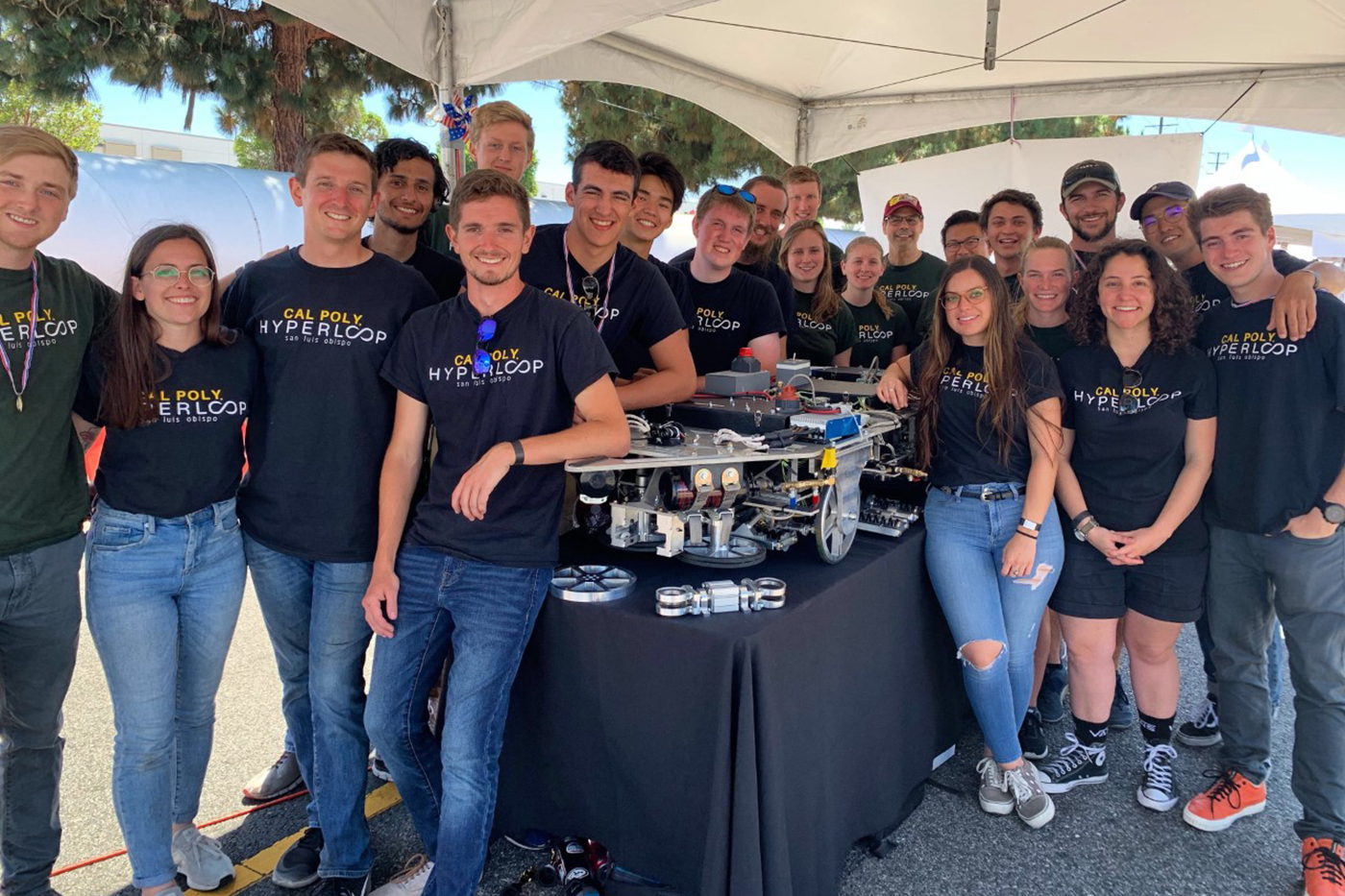Just one year after founding Cal Poly Hyperloop, the team placed among the top competitors at SpaceX’s Hyperloop Pod Competition over the summer.
More than 200 schools from around the world entered the first round of the competition and Cal Poly’s team was one of only 22 schools that made it to the second round. The teams were required to pass a series of tests before they could race. Cal Poly’s team was able to make it to the structures test. They were unable to pass, so they could not perform the rest of the remaining tests required to race.
Despite not being able to race, the team earned enough points to unofficially come in sixth place behind Massachusetts Institute of Technology. Only four teams, Technical University of Munich (TUM), Delft Hyperloop, EPFL Hyperloop, and Swissloop, were able to pass every test and race their pods, with TUM taking first place.
“We were okay with that,” former club president and mechanical engineering senior Sam Flood said. “We were one of the only two first-year teams there.”
The club was recognized for having the most inexpensive pod in the history of the competition, costing under $20,000 — a significant difference when compared to the costs of the top four finalists’ pods, which were about $100,000 each.
“It was a big thing for Cal Poly,” Flood said. “All of the advisers were saying ‘The reason we like seeing Cal Poly at this kind of stuff is that you guys know how to build effectively, efficiently, and cheaply and get the job done as easily as possible.’”
The club is funded entirely through on-campus grants and industry sponsors, which were difficult to obtain as a first-year team.
Flood said it was ultimately their lack of funding which pushed them to be innovative and find a way to build their pod on a low budget. Aside from funding, the club also faced other challenges, like having to learn on the go and working long hours to meet deadlines.
How it works
On July 21, the team arrived at SpaceX headquarters in Hawthorne, California to assemble their pod at the fourth annual SpaceX Hyperloop Pod Competition.
The club’s mission was to construct a pod that could travel in a one-mile vacuum at about 200 mph. The pod was designed to imitate Hyperloop Alpha, a high-speed train concept proposed by Elon Musk with the goal to revolutionize modern transportation.
The team arrived in Hawthorne with their pod disassembled and had to build it from the ground up onsite, putting them at a disadvantage to their competitors, who had arrived with their designs already put together. In the days leading up to the race, the team worked nonstop from 7 a.m. to around 3 a.m. to pass all of the safety checks.
“We all needed to be working. Every hand that was available was turning a wrench or writing a piece of code,” Flood said.
Sleep deprivation quickly became a concern, and club officers were faced with the decision to push their team to keep working or give up altogether. But every day, they came to the consensus that they should keep building — and it paid off.
Recognition
Since the competition, the club has witnessed a boost in membership with about 500 students signing up at this year’s club showcase. The companies that gave donations last year also wanted to donate again. The club was also featured in TechCrunch.
Mechanical engineering senior and Hyperloop President Kara Hewson said the club will be working on some ambitious projects this year, including developing cold gas thrusters and working on magnetic levitation technology that will replace the pod’s wheels.
The club is creating an expedited timeline for their new developments to make sure they stay on track and pass all the tests, so when the 2020 competition rolls around, they will be ready to race.
Hewson said it was the team members’ enthusiasm to learn and work together that helped propel the club this far in the first place.
“We’re all these young engineers trying to learn and apply our skills in some way and we’re coming together to do that,” Hewson said. “And as we became better friends and actually kept making it through each of the checkpoints we were like ‘We can do this. Let’s prove them wrong and show them that a first year team can go in and race.’ That was our motivation to keep us going.”

